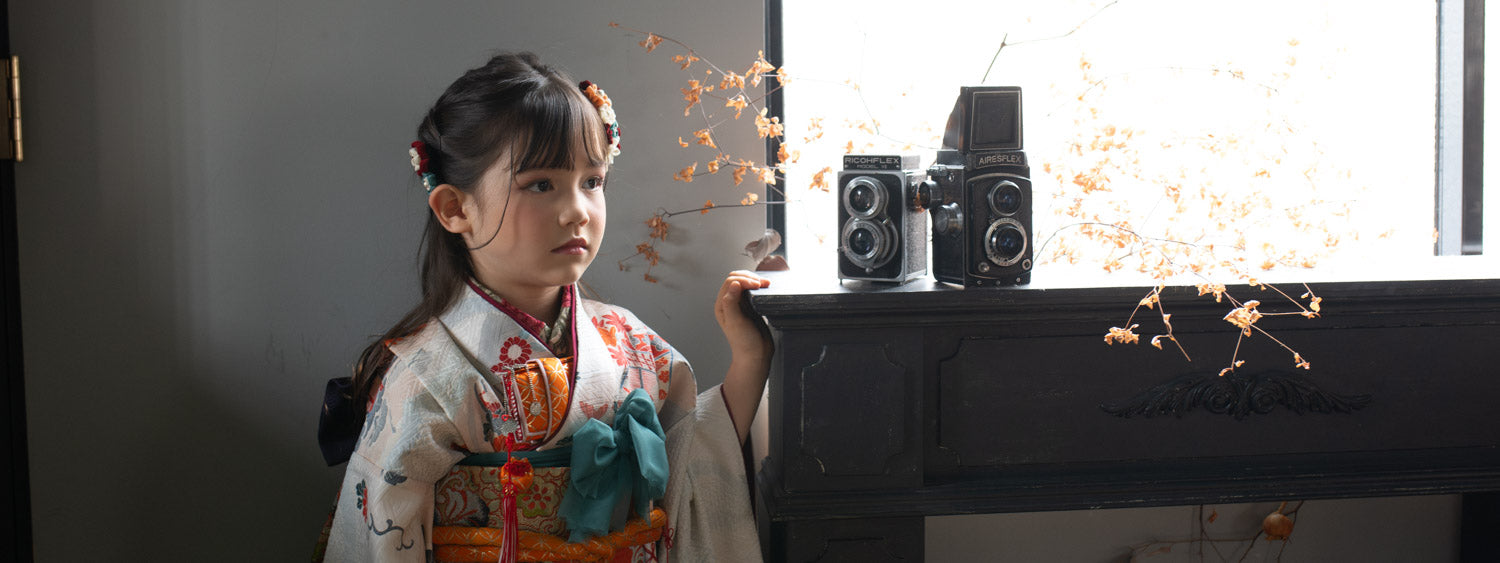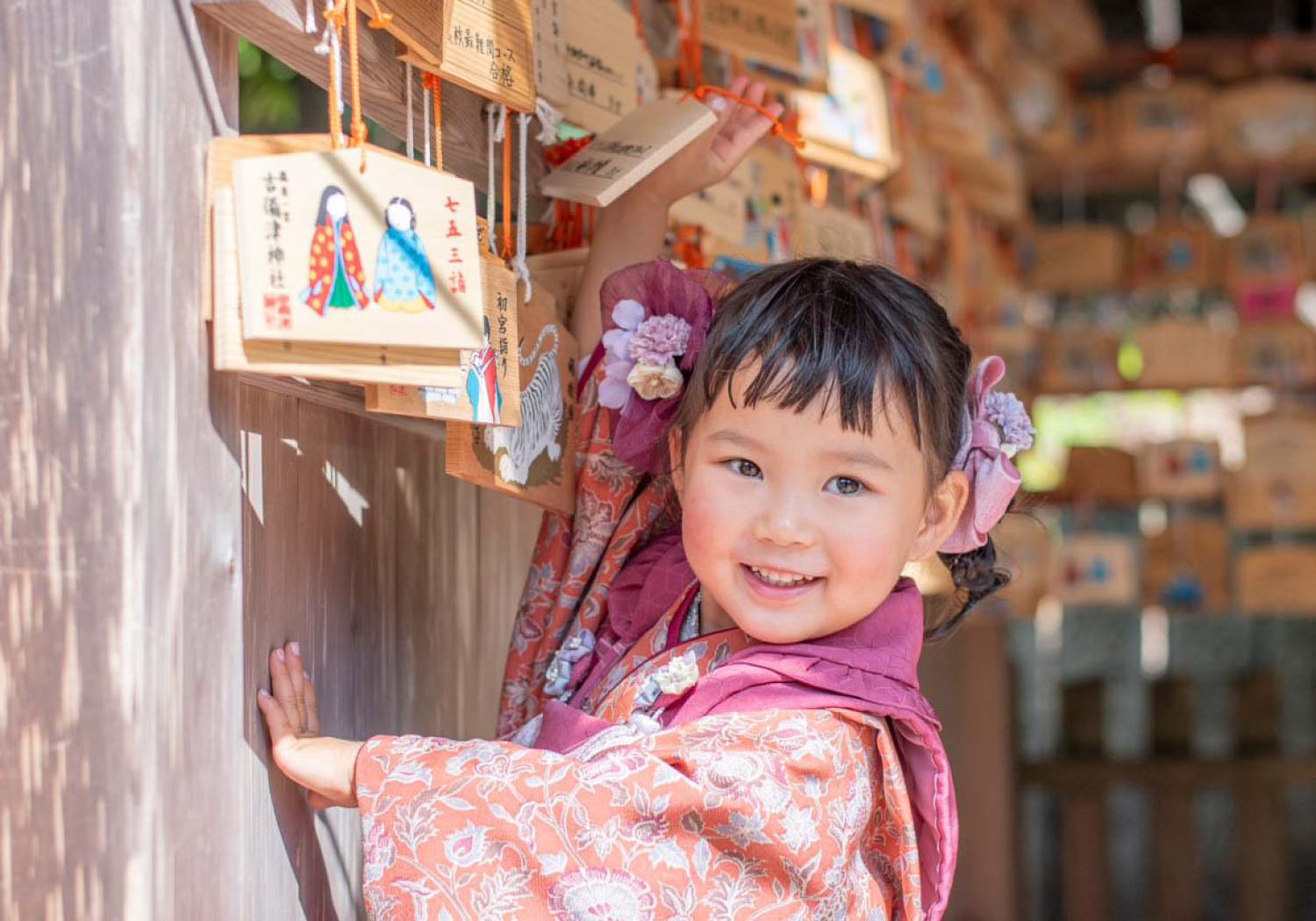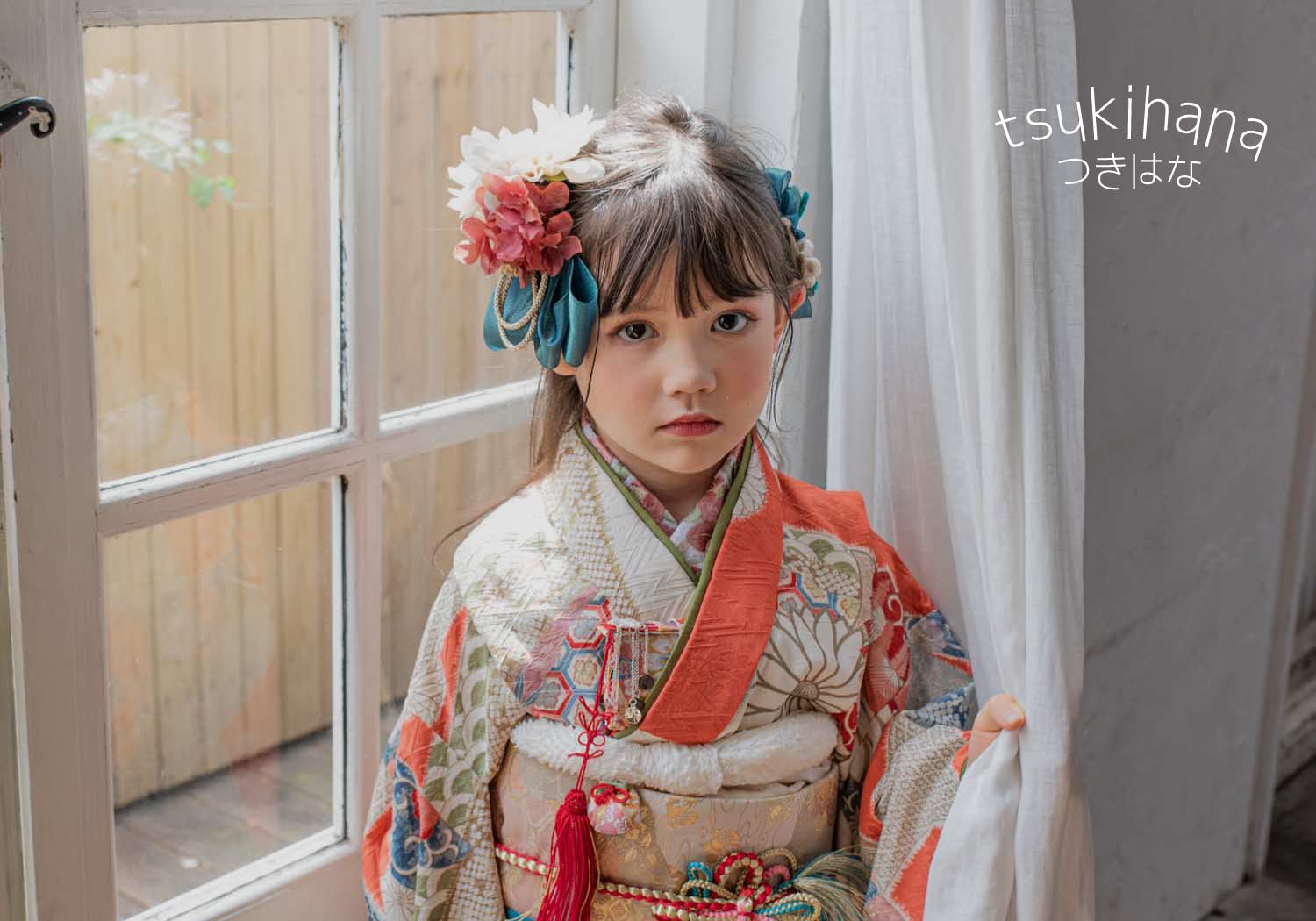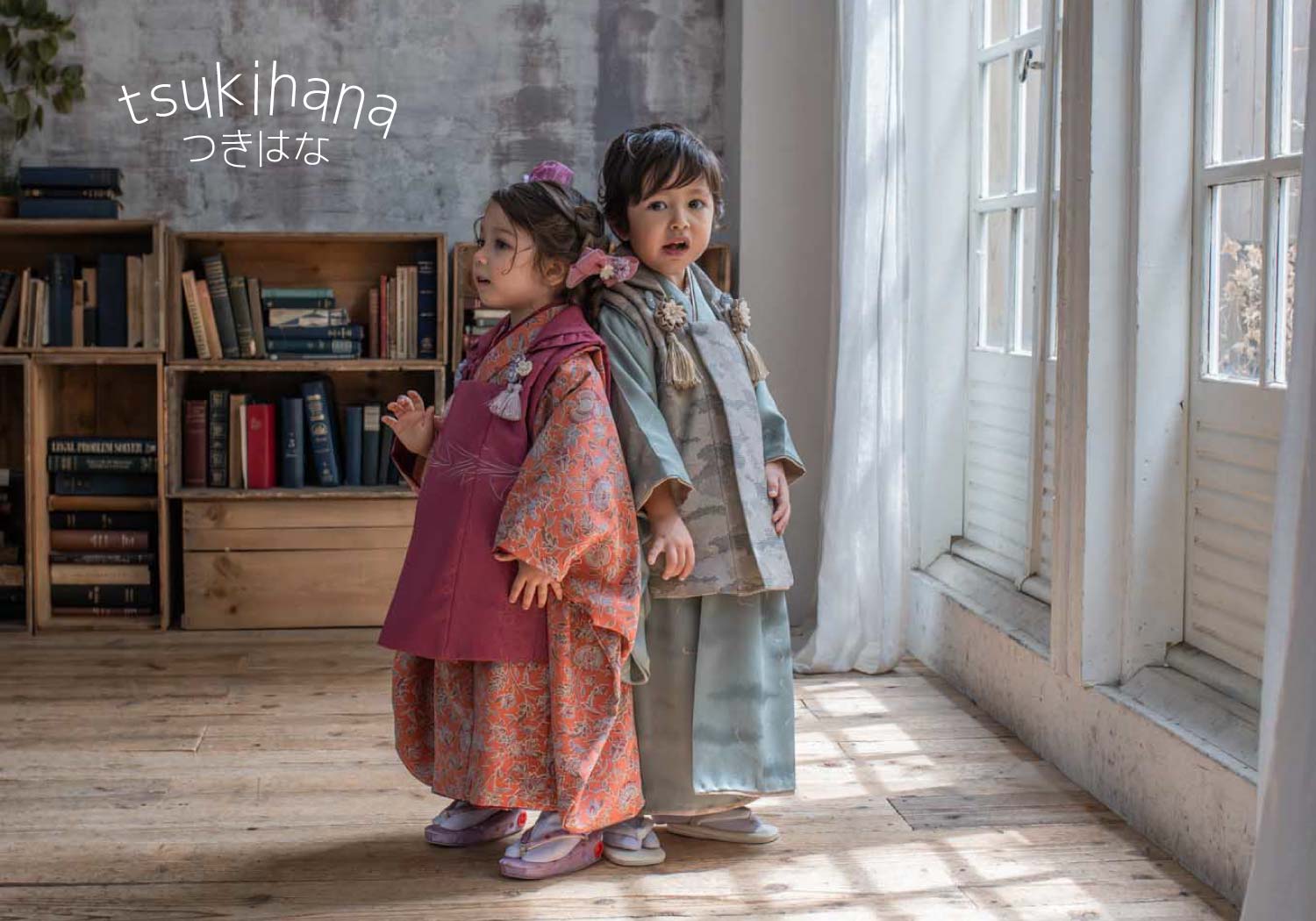What about Shichi-Go-San?
Shichi-Go-San is a traditional ceremony to celebrate the healthy growth of children.
Shichi-Go-San is one of the traditional events that has been carried on in Japan since ancient times.
As the name suggests, it is a ritual in which three-year-old boys and girls, five-year-old boys, and seven-year-old girls visit shrines or other locations, give thanks to the gods, and pray for their future growth and safety.
It is said to have been practiced since the Heian period, when the child mortality rate was very high due to medical and hygiene issues, so ensuring that their children grew up safely was probably the greatest wish of parents.
Against this background, the origin of Shichigosan is said to be the practice of giving thanks to God and celebrating the growth milestones of children at the ages of three, five, and seven.
Age 3 | Hair-Cutting Ceremony (for boys and girls)
Kamioki no gi
During the Heian period, there was a custom of shaving a baby's head on the seventh day after birth and keeping it shaved until the age of three.
This was because the purpose was to keep the head clean when young, and children only started growing their hair from the age of three.
It is said that a celebratory ceremony was held as proof that the baby had grown safely to the age of three, and prayers were offered for the baby's long life.
This ceremony is performed for both boys and girls age three.
For celebratory attire, both men and women mainly wear hakama kimonos .
Age 5 | Hakama-wearing ceremony (boys)
Hakamiginoki
This ceremony is when a boy turns five years old and puts on a haori and hakama for the first time.
This represents entering adulthood and is said to have been a wish to take over the world and defeat enemies on all sides.
At the beginning of the Heian period, this ceremony was performed by both boys and girls, but during the Edo period it became a ceremony performed only by boys, and even today it is still performed only by boys.
Haori and hakama are the main attire worn for celebratory occasions.
Age 7 | Obi-kai no ceremonies (for girls)
Obi and Ki
This is a ceremony to celebrate the child removing the obi strings that were sewn onto the child's kimono, and allowing the child to tie an obi and wear a kimono just like an adult.
It is said to have begun in the Kamakura period, and was originally performed at the age of nine for both boys and girls, but from the end of the Edo period it began to be performed at the age of five for boys and seven for girls.
For celebratory attire, the most commonly worn is a long-sleeved kimono with an obi fastening .
When is Shichi-Go-San held?
Traditionally, the 15th of November is the day for Shichi-Go-San.
The ceremony should be held on November 15th when the child is 3, 5, or 7 years old (based on their "counted age" or "full age"), or on a convenient date within the months before or after that.
The Shichi-Go-San season is from September to December . We recommend avoiding the November season due to the crowds at photo studios and shrines.
We also recommend doing the studio shoots during a time when you have more time for pre-wedding and post-wedding shoots, and visiting the shrine (outdoor location shoot) in November, or on a weekday if it suits your family's schedule.
There is no "must be a certain day!". The sooner the better.
We want you to enjoy your precious child's special anniversary to the fullest without worrying too much about the date.
What happens during Shichi-Go-San?
[Prayer at the shrine]
The Shichi-Go-San visit involves visiting the local guardian deity of the place where the child lives and praying for the child's future growth and health.
If you don't know which shrine your tutelary shrine is, you can find out by inquiring at the shrine office in your prefecture .
Alternatively, it is fine to have a prayer at a shrine that you have a connection with or that you prefer.
However, it would be wise to avoid going to places that are too far away as it would be a burden on your child.
·Things to prepare
- First fruits offering
It is a good idea to check with the shrine in advance about the amount of money to be given when praying.
*Please put the money in a gift envelope and bring it with you on the day.
- Children's costumes
Prepare costumes that suit each year of celebration. You can rent, buy, or have them made from scratch. It can be a lot of work to get everything ready, so we recommend renting costumes for Shichi-Go-San, which often come as a complete set.
Make sure to make a reservation in advance so you can wear the item you want.
- Parents' costumes
Either Japanese or Western clothing is fine as long as it's formal.
However, make sure the costume you choose is not more sophisticated than your child's.
When choosing traditional Japanese clothing, mothers should choose formal attire such as Homongi, Tsukesage, or Iromuji.
It is best for the father to choose a kimono that matches the mother. Basically, a plain kimono with a haori coat is fine.
Alternatively, wear a formal plain suit.
If you are dressing in Western clothing, your mother should wear a formal suit or a dress and jacket. Avoid bright, flashy colors.
Fathers wear formal plain suits.
- Other useful items: Children's comfortable shoes (wearing sandals for long periods of time is tough)
・Foldable eco bag (for all the things we keep bringing with us)
・Folding fan (it's still hot in September and October)
・Water bottle with straw (so it's less likely to spill on your kimono)
・One waist cord (to roll up your kimono when using the toilet or washing hands)
・Small snacks (when they're fussy, Ramune is good)
- Preparation before departure: Learning how to put on a kimono (I was forced to make some adjustments)
・Hair and makeup before dressing (finish early)
・Go to the toilet right before getting dressed (it's a pain to go to the toilet after getting dressed)
[Commemorative photo]
・Photo studio
Kimono and haori hakama costume rentals, dressing, hair and makeup, and photography are often included in the package, so you can casually take commemorative photos empty-handed.
Each studio has different rental costumes, backgrounds, and accessories, so be sure to get information in advance and make your selections.
Many studios allow you to bring your own Shichi-Go-San costumes . If you have a favorite costume, feel free to ask about it.
・On-location photography (location shooting)
This photo was taken when praying at a shrine.
You can use a visiting photographer or bring your own camera.
Alternatively, there are plans that include on-site photo shoots at a photo studio.
It would be a good idea to take separate photos before and after the prayer.
I took a quick photo before he lost his mood (before the prayer)♪
I recommend taking a shot from behind of a parent and child walking up the approach to the shrine.
After the prayer, take a photo in front of the shrine with some Chitose-ame.
Don't forget to take a video.




